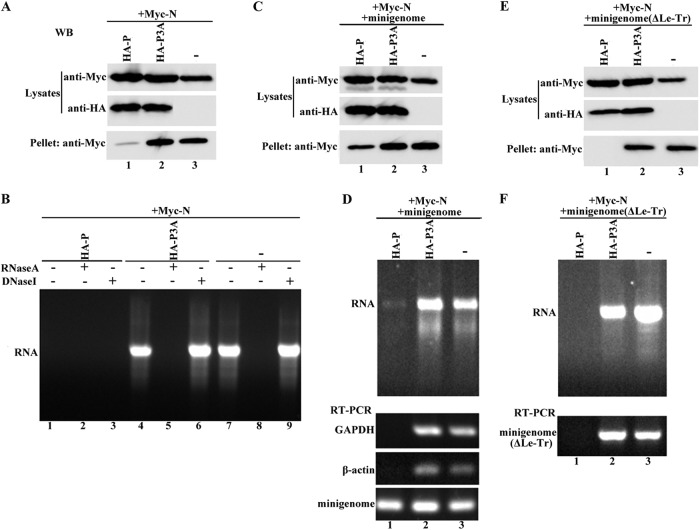Fig 5.
Ability of N binding of cellular RNAs and viral genomic RNA in the presence of P and P3A. (A and B) P3A is incapable of preventing N from binding to cellular RNAs. BHK cells were transfected with plasmids encoding N alone or N plus P or P3A. (A) Lysates from transfected cells were centrifuged, and an aliquot of 10 μl of supernatant was analyzed via Western blotting to detect N, P, and P3A expression. The remaining supernatant was analyzed via CsCl gradient centrifugation as described in Materials and Methods. After centrifugation, the pellet was used for N detection (A) and further purification of RNAs (B). The RNAs or RNAs treated with RNase A or DNase I were analyzed in a 1% agarose gel. (C and D) Assay performed as described for panels A and B, but with the addition of minigenome expression for all transfection combinations. CAT antigenomic RNA and GAPDH and β-actin RNAs were amplified via RT-PCR, using RNAs in the pellet as a template. (E and F) The assay described for panels C and D was performed, but the minigenome was replaced with the ΔLe-Tr minigenome.

